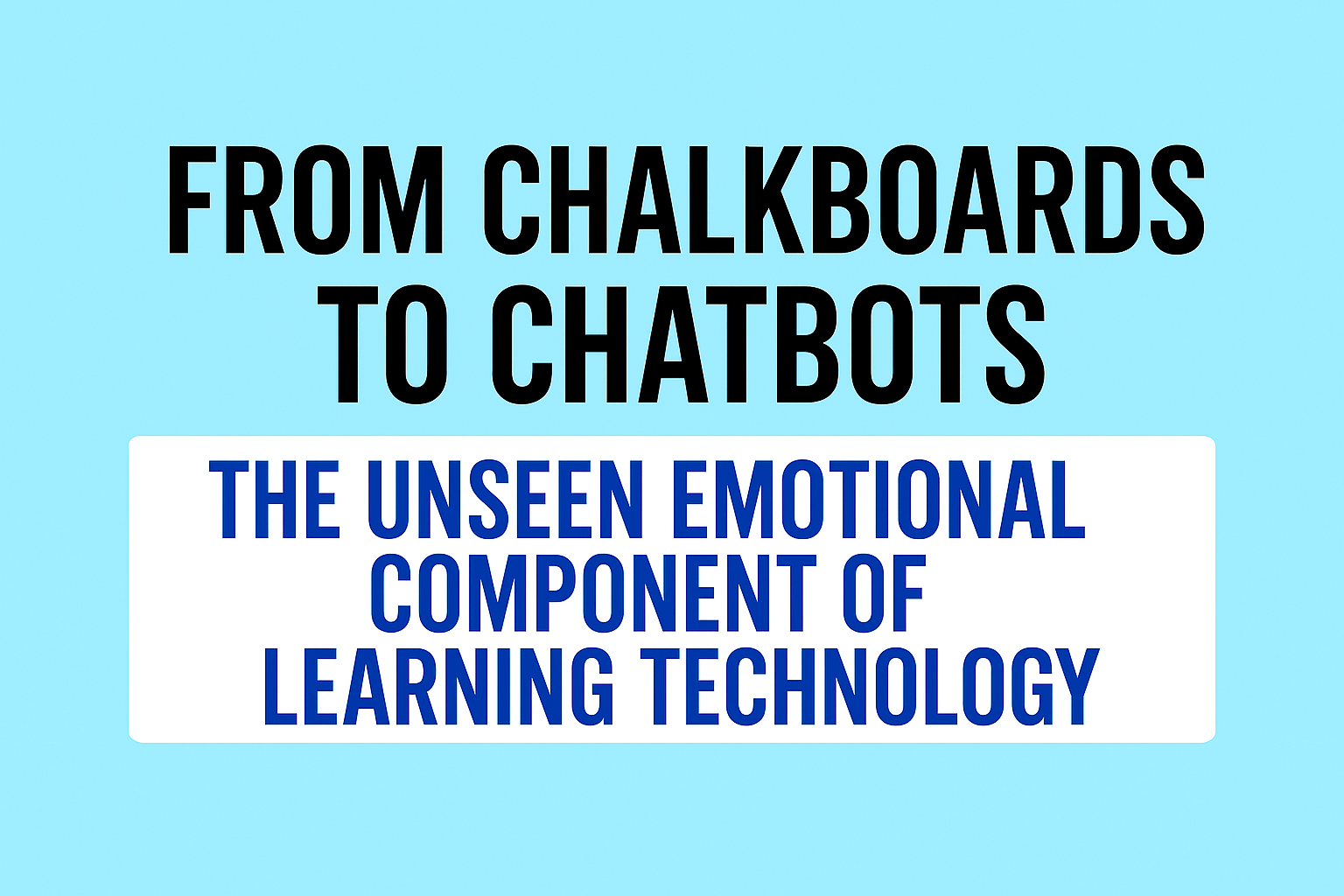

When we think of learning technology, we think about efficiency, access, and innovation. We transitioned from chalkboards to tablets to AI-driven chatbots. Each new learning tool promises faster, smarter, and more personalized aspects of learning. But behind the shiny devices and algorithms is something rarely talked about—the emotional context associated with learning with technology.
The Transition from Chalkboards to Chatbots
Chalkboard learning was communal. Students sat in rows, watching teachers as they wrote, explained, and sometimes paused to catch their breath. School was not only about knowledge transfer. It fostered a community of shared experience, body language, encouragement, and that human connection that creates memorable lesson plans.
Fast forward to today. Chatbots can answer questions before you finish typing. Adaptive platforms modify quizzes to your ability level. AI tutors never get tired. While for many, we have created amazing accessibility and personalization, we have also changed how learners feel about the act of learning.
Inside the emotions of learning technology
Technology doesn’t only change what we learn, it also changes how we feel while we learn.
Confidence or Intimidation – Feedback is instant with most applications, and that can increase confidence and self-esteem. However, constant scores, comparisons, and an abundance of data can lead to anxiety.
Connection or Isolation – While online learning platforms can provide access from any corner of the world, some students feel isolated in this form of learning. The absence of teacher cues, like a smile, or recognition from peers, like a nod, reduces learning’s emotional engagement.
Motivation or Burnout- The use of gamified components like streaks and badges can motivate; however, if they are used to reduce learning experiences to numbers, they can also create an emotional guilt reaction when a streak is broken.
Why do emotions matter in learning?
Neuroscience tells us that emotions cannot be separated from our cognition; they are used together. A student who is engaged and feels supported in their learning will learn more than a student who has anxiety or feels isolated in tech, as they could also have in a classroom. To put it another way, the best technology does not just provide information, it provides emotional safety and a sense of belonging.
Human Touch in a Digital World
The issue is not whether to use chalkboards or chatbots, but how technology can complement, as opposed to supplant, the emotional connection we provide in education. Teachers leveraging digital platforms can not forget that they can;